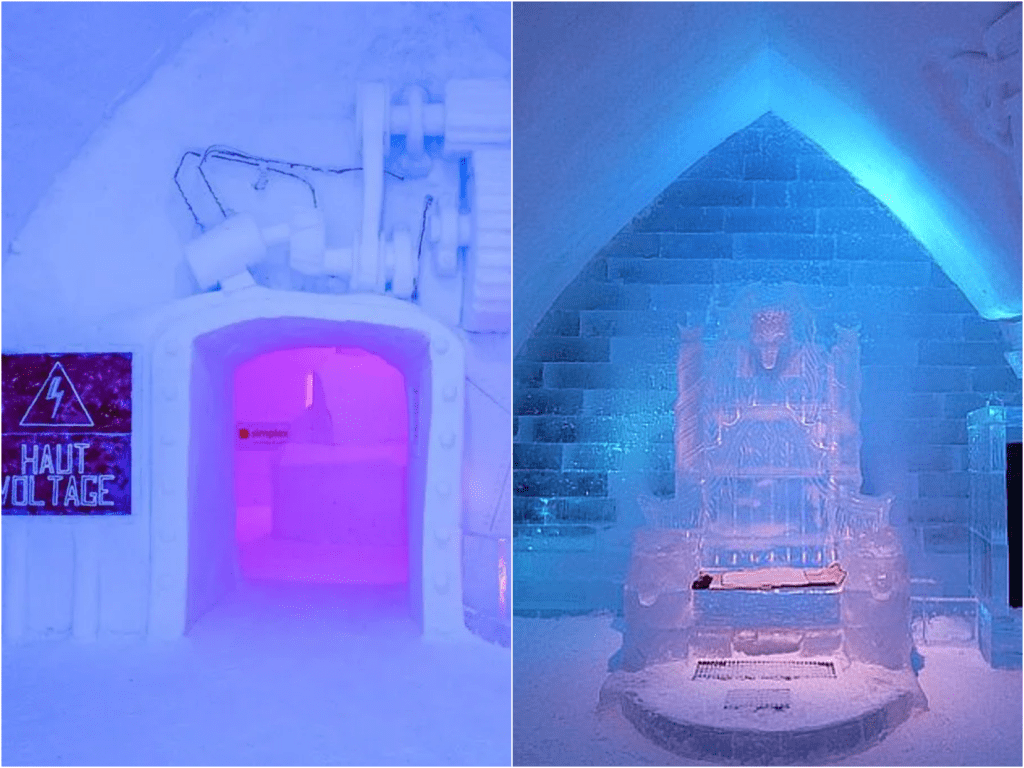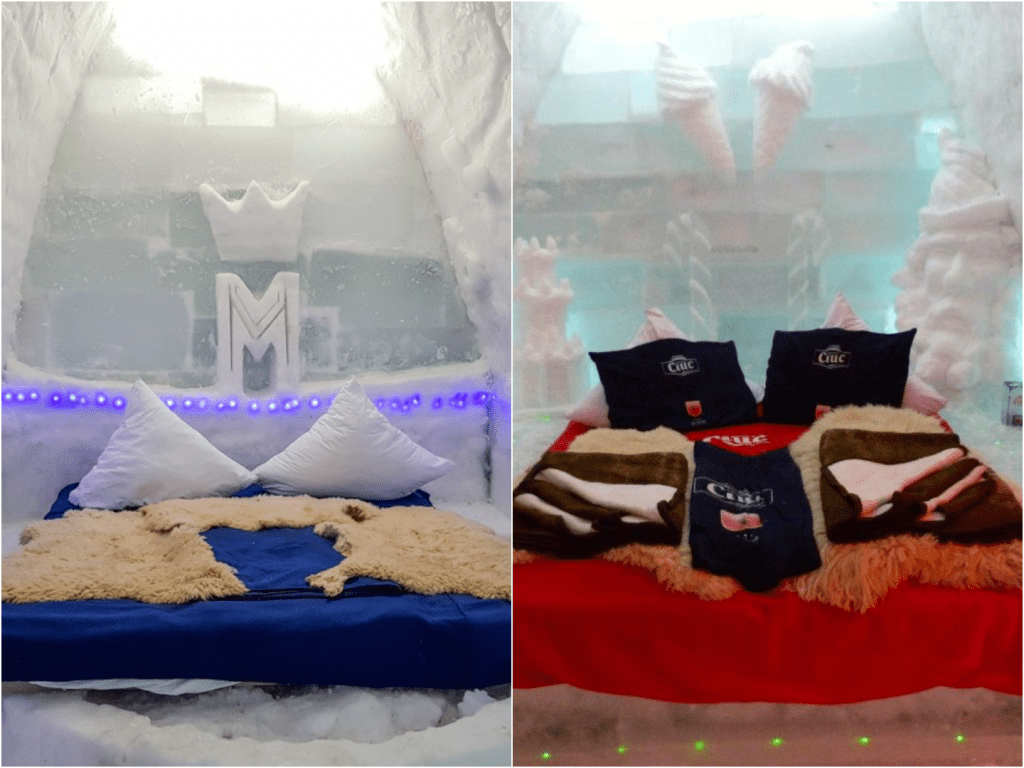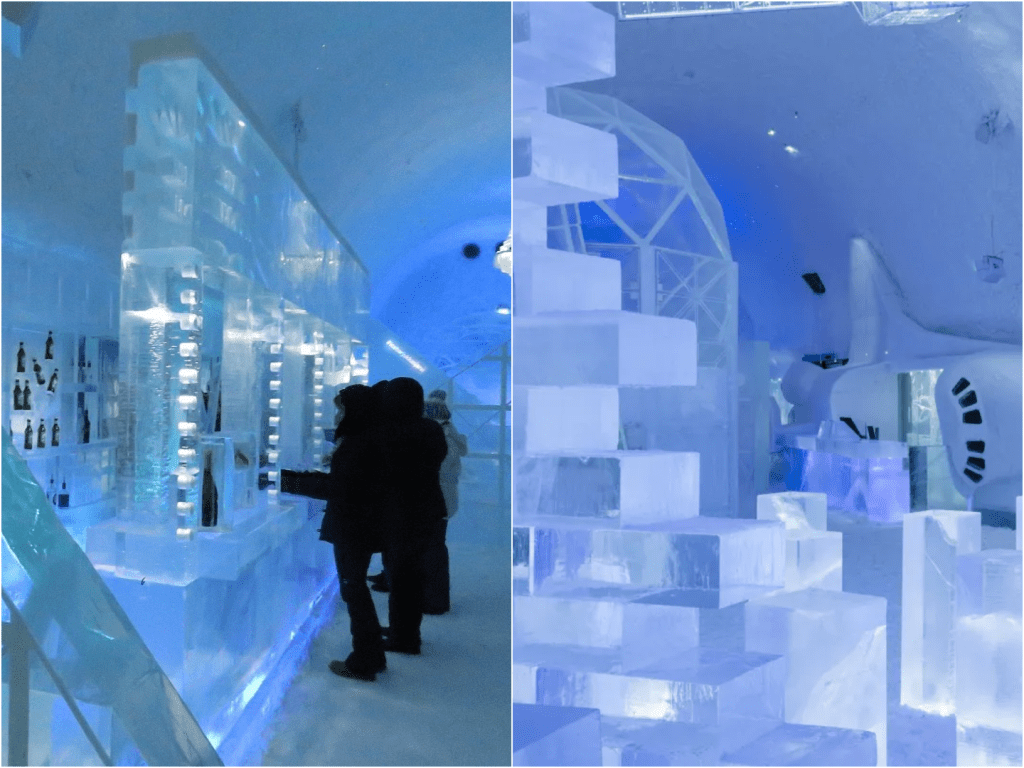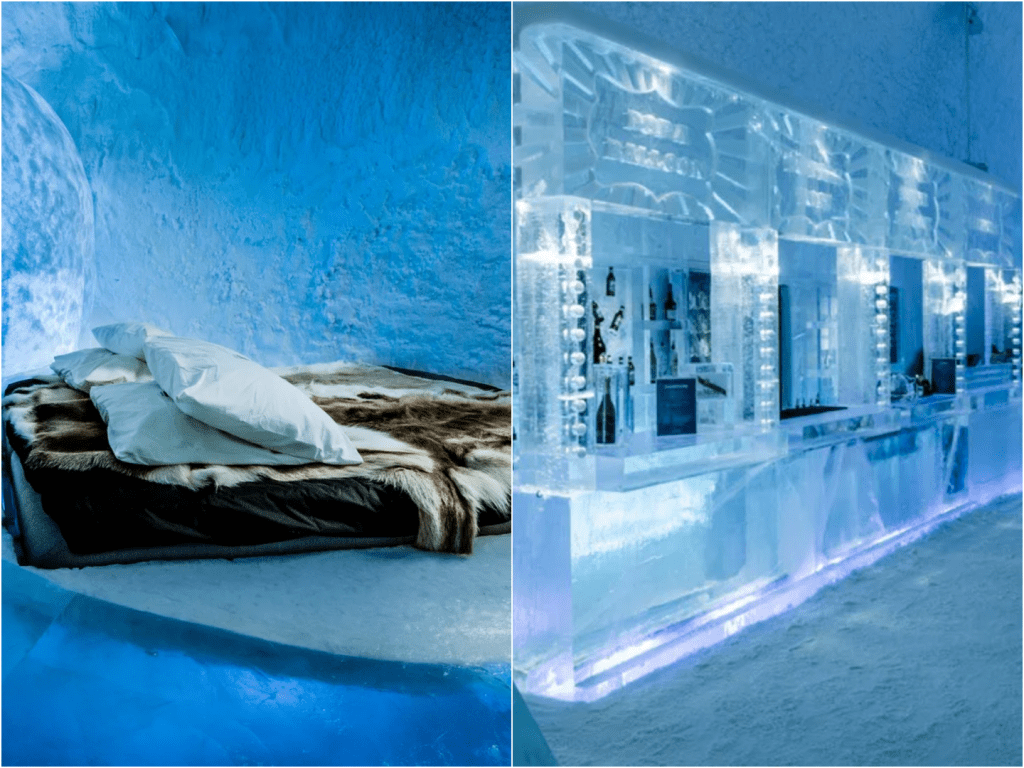Sleeping in Ice: The Incredible Hotels Built Entirely from Frozen Lakes
I still remember the thrill of walking into my first ice hotel, eyes wide at walls and sculptures lit in blues and purples, all carved from pure ice. It felt like stepping into a dream, where everything was soft, fragile, and a little wild. These hotels are not made of wood or stone—they are built from frozen lakes and rivers, each creation lasting just a few months before the spring sun melts it away. That sense of living art, made of ice, is what makes them unforgettable.
The most famous of all is the Icehotel in Jukkasjärvi, Sweden. It first opened in 1989 and since then it has been rebuilt every winter using ice harvested from the Torne River. Each year, around November, builders and artists work through deep, cold nights to sculpt rooms, halls, bars, and even a chapel entirely from blocks of river ice and snice—a special mix of snow and ice acting as mortar. The result is astonishing: a frozen masterpiece that feels alive, breathing the magic of Arctic winter.
Walking inside the Icehotel, every surface feels smooth and cool. Beds are ice platforms topped with wood, mattresses, and reindeer skins, while guests curl up inside Arctic-grade sleeping bags. Even at minus five degrees Celsius, the thick layers keep you surprisingly warm. Outside, the world shivers at minus twenty, but inside it feels like being held in a chilly, sculpted embrace.
What makes the Icehotel so special is its creativity. Every year artists from around the world submit designs, and a jury chooses a few dozen to turn into themed suites. Guests don’t just sleep here—they experience art made of ice.
For those who want the ice experience beyond winter, Icehotel 365 stands nearby. Powered by solar energy, this year-round section stays frozen above zero Celsius. Inside are deluxe ice suites, an ice bar, and a gallery space. The idea is striking—an art hotel made of ice that never melts, yet sits in the open air.

Sweden isn’t the only place hosting ice stays. In Canada near Quebec City, the Hôtel de Glace sets up each winter on Lac-Saint-Joseph. Made from 500 tons of ice and 30,000 tons of snow, it has 44 rooms plus a chapel and ice bar, all crafted anew each season. Travelers warm up in heated bathrooms and hot tubs after a night in icy splendor.
Further south in Romania’s Făgăraș Mountains, the Bâlea Lake Ice Hotel rises each year beside its frozen alpine lake at 2,034 meters above sea level. Accessible only by cable car in winter, it offers cozy rooms carved by local artists, plus an ice bar and restaurant. The isolation makes it feel like a secret kingdom, buried in European winter.

Sweden, Canada, Romania, Finland, Japan, Norway—they all share one thing: these ice hotels are temporary wonders built against time. When spring arrives, sunlight dissolves walls and sculptures back into water, returning beauty to obscurity. That makes them more magical. You know the art won’t last, which makes every step inside feel sacred and fleeting.
Staying in an ice hotel isn’t just about novelty—it touches something deeper. One traveler described their experience as “an art gallery you sleep in,” feeling the contrast of warmth inside crisp quiet. The silence in those frozen halls is surreal. It’s just you, the ice walls, and the soft hum of heaters nearby—quiet enough to feel your own breath.
Yet it’s not survival camping. These hotels include hot facilities, saunas, and outdoor hot tubs. You warm up, chat, watch steam drift against ice walls, then tiptoe back to your ice bed. It becomes a ritual of powder blue sleep and glowing warmth. It’s not freezing, it’s embracing the cold with comfort.
Sleeping on ice teaches you to notice details. You feel the way light refracts through walls. You hear drips in hidden rooms. You watch the change of daylight outside—blush pink skies melting into deep night. You sense the passage of time as the walls thin imperceptibly, reminding you of nature’s cycles.

These hotels also bring community. Building them takes local hands—construction workers, artists, engineers. In Jukkasjärvi, it’s a local economic boost and annual celebration. Visitors also come for winter activities—dog sledding, snowmobiling, Northern Lights trips. Icehotel links itself to the Arctic landscape, letting people experience winter in honest, creative ways.
For me, that connection mattered. Sleeping on ice felt like an invitation: “Here is the world as it changes, and you are part of it.” It’s cold and strange, but also tender. It’s a reminder that beauty doesn’t have to last to be real. Walls can melt; art can vanish. But the memory stays.
If you’re planning a trip, bring good thermals, a sense of wonder, and an open heart. Arrive in Sweden, Quebec, Romania, Lapland, Norway, or Japan in winter. Step into your sculpted room. Curl up under furs. Let the silence and stillness seep in. Wake up to morning light flickering through ice. Then dress, warm up in sauna, and step outside into a world more vivid for its impermanence.
Sleeping in an ice hotel is a page from the story of our world’s cycles. Build, melt, remember. It’s art in time, frozen to be lived and then returned to the river. And that is a gentle lesson—sometimes the most beautiful things are those that leave a little too soon.

Lena Carter is a travel writer and photographer passionate about uncovering the beauty and diversity of the world’s most stunning destinations. With a background in cultural journalism and over five years of experience in travel blogging, she focuses on turning real-world visuals into inspiring stories. Lena believes that every city, village, and natural wonder has a unique story to tell — and she’s here to share it one photo and article at a time.





